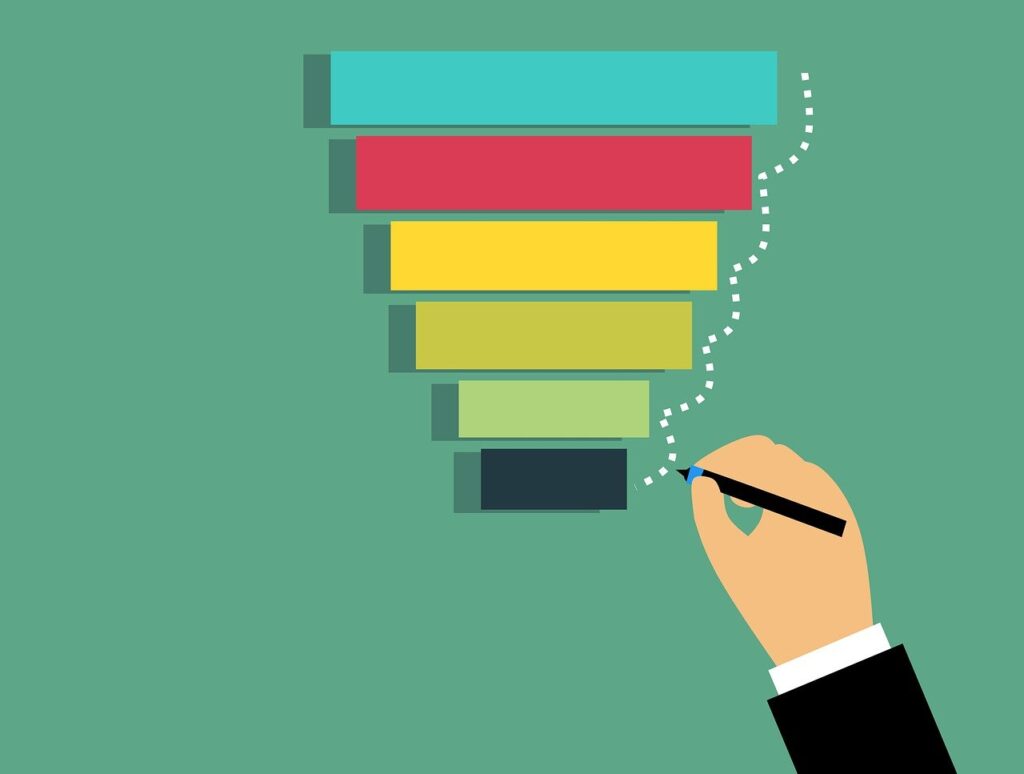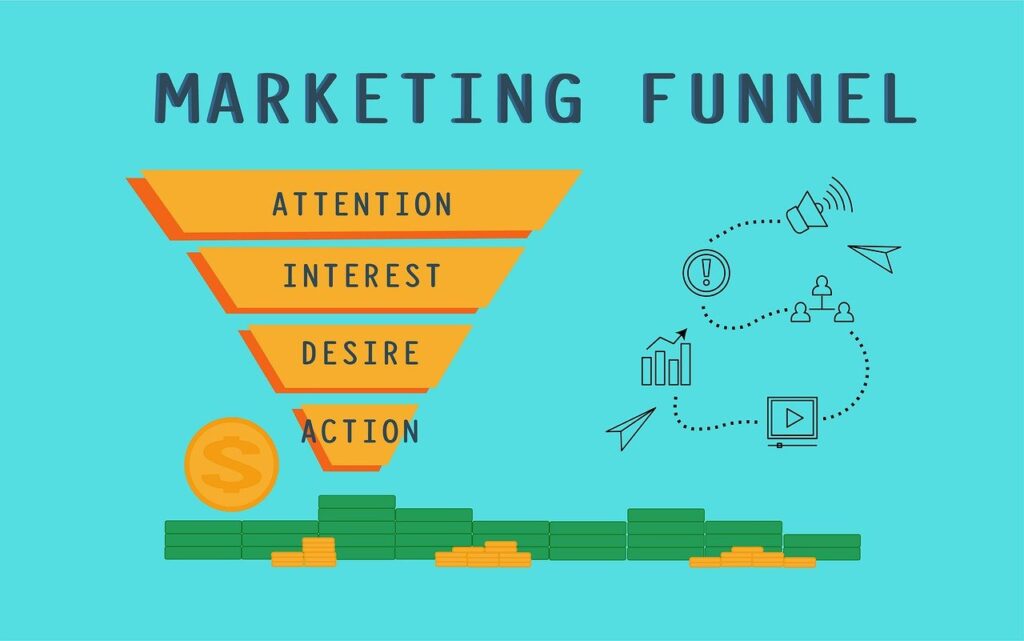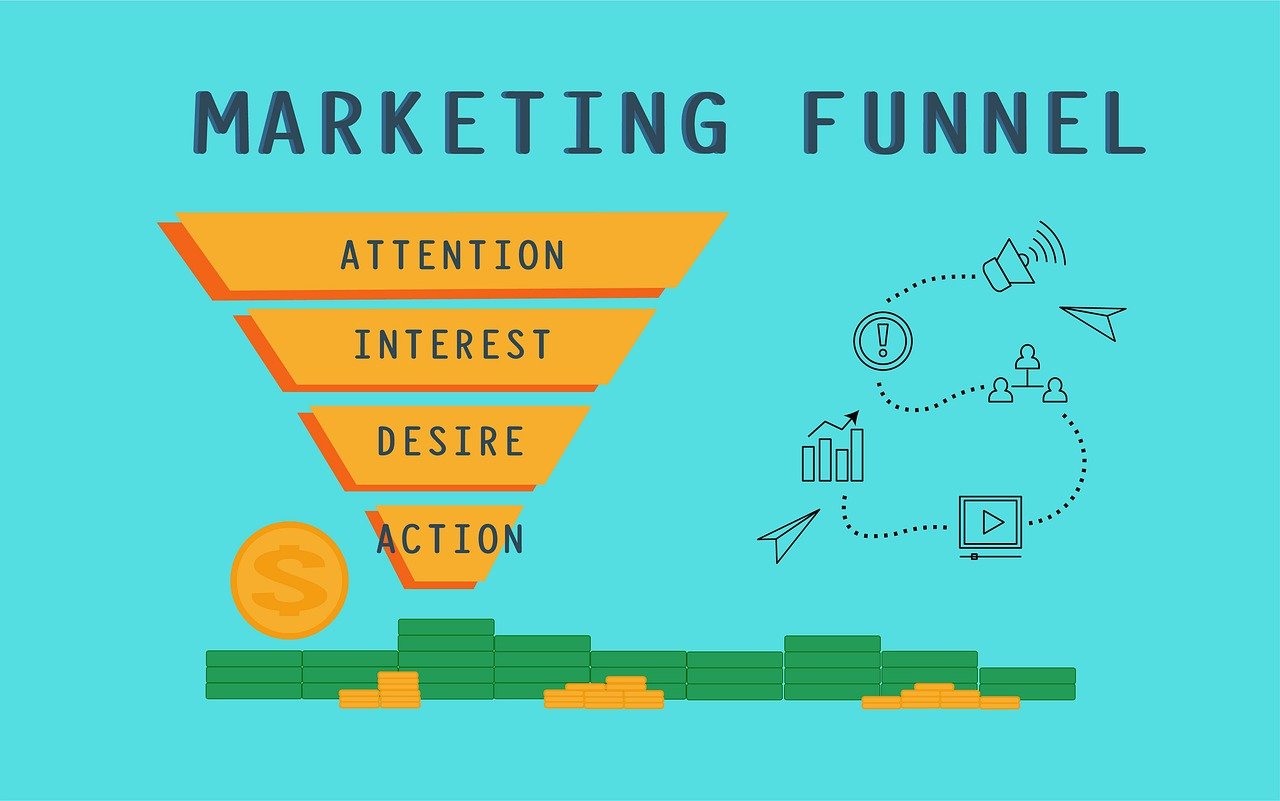Examples of Awesome Sales Funnels
The best way to build a funnel is to start with your flagship product and build your funnel out with that big offering in mind. Then, you’ll actually build smaller funnels for each product or service that you plan to promote. What is going to work best is a funnel that keeps in mind the goal of the promotion, along with where your customers are in the buying cycle. These offer funnels are great examples of offer funnels that work.

Digital Marketer.com – Every blog post that they have offers a way to get on their list. They have a huge lead generation strategy that offers their audience free and paid products. Their offer funnel is very deep and multifaceted, but it all leads to their best products in hopes that customers develop long-term relationships.
Campaignmonitor.com – This is a great way to get people into your funnel by offering audience members, who clicked through, to try out your product free of cost. The free trial gets them on your email list. The way in which they attract people to their site is by using their help desk content for SEO purposes rather than just random blog posts. So, offering a lot of “how to” articles brings the people to the site, and the free trial gets people interested and on their list.
Socialfresh.com – When you initially look at their site, you don’t realize it but there are several entry points into their offer funnel. Click on any blog post and you’ll see an offer to reserve your seat for any upcoming events, and within the blog post, you’ll see several links for information that require an opt-in to go further while the blog posts give the promised information.
KimraLuna.com – Kimra uses her popular Facebook Group to generate traffic for her offer funnel with the free group being the trigger that starts the process. She is very active in the group and often mentions her website, courses, or other offerings so that her audience will click through and end up signing up for her list either via a mini- course, memoir, and other freebies all being delivered via email marketing. The ultimate goal is to get you to sign up for her most expensive coaching program or attend her events and for her audience, it is very effective.
Notice a trend? Each of these examples offers multiple entry points into the offer funnel. Some people will end up signing up for your list via your groups, blog posts, your website, a webinar, or something else. It all depends on your audience. What they need most? What is more lucrative or interesting to them? That’s why it’s imperative to know who your audience is.
Meeting the Needs of Your Customers
When you put your customers’ needs before everything else, you’ll be able to create a flagship product and all the products or services in between. When you develop an offer funnel, start with the most expensive product or service. You’ll easily see what you should create for your audience that will lead them to the most helpful and expensive product or service.
After all, it’s a lot easier to provide people with something they already want, than to convince them that they need something you already created without studying your audience. A deep offer funnel will make most of this almost seem automatic once it’s set up. Identifying where your audience is in the buying cycle and delivering content, products, and services to them right when they need them will make it seem like child’s play.
Of course, it does take some work to get started.
Putting it All Together
Create your offer funnel by knowing your audiences’ needs, motivations, and buying cycle. This will enable you to create your flagship product or service, and then all your other offerings will stem out from there. Based on your products and services you’ll need to create landing pages for each offering, plus an email list for each as well.
Create the flagship product and then a couple midrange products along with freebies or entry-level products each with an email marketing series. Remember, you can reuse and repurpose content for each list as long as it makes sense. So, for example, let’s say you have 10 short mini-courses loosely based on your flagship product of a 52-week course with one-on-one coaching.

Each of these 10 courses offers an entry point into a new list. Each list needs to be separate so that you can ensure the messages make sense but the message is to get the next product down the funnel until they approach your flagship product. Segmentation is important because you don’t want to confuse your audience.
You don’t want to tell people who just signed up for mini-course 1 to sign up for it again, instead, you want to promote mini-course 2 or you might want to promote your webinars that promote your flagship product or service. But, you can re-word the messages to fit with each list accordingly.
If you use your autoresponder software to its full potential you can actually set it up so it automatically moves someone from one list to the next based on whether they answer your calls to action or not. Tip: Good software to consider using is Convertkit.com, Aweber.com, and GetDrip.com. These all offer you the ability to segment lists in a way that works for your business and needs.
Once you have created these products that offer new entry points into your offer funnel, using your website as the hub for all your products, services, and in-depth information, you can use social media as a way to push it out to others, to build relationships, and get attention. Once it’s set up, it’ll be practically automatic and all you’ll have to do is curate and add new content occasionally based on the season, the trends, and the issues of the day. And, with each new product you create, you make it easier for your audience to find you and learn about your flagship offering as long as you’re staying on brand and on message.
Getting Started
Now it’s your turn. What is your flagship product? Don’t worry if it’s not even created yet. You can create it as you go. Consider that a 52-week course only needs to be created one week at a time. But, you can still make the sales page now, and then use that information as a jumping off point for the rest of your midrange, low price and entry point products and services. As you build it out, you’ll soon realize that your offer funnel has and will continue to explode your business in ways that you never thought of before.
